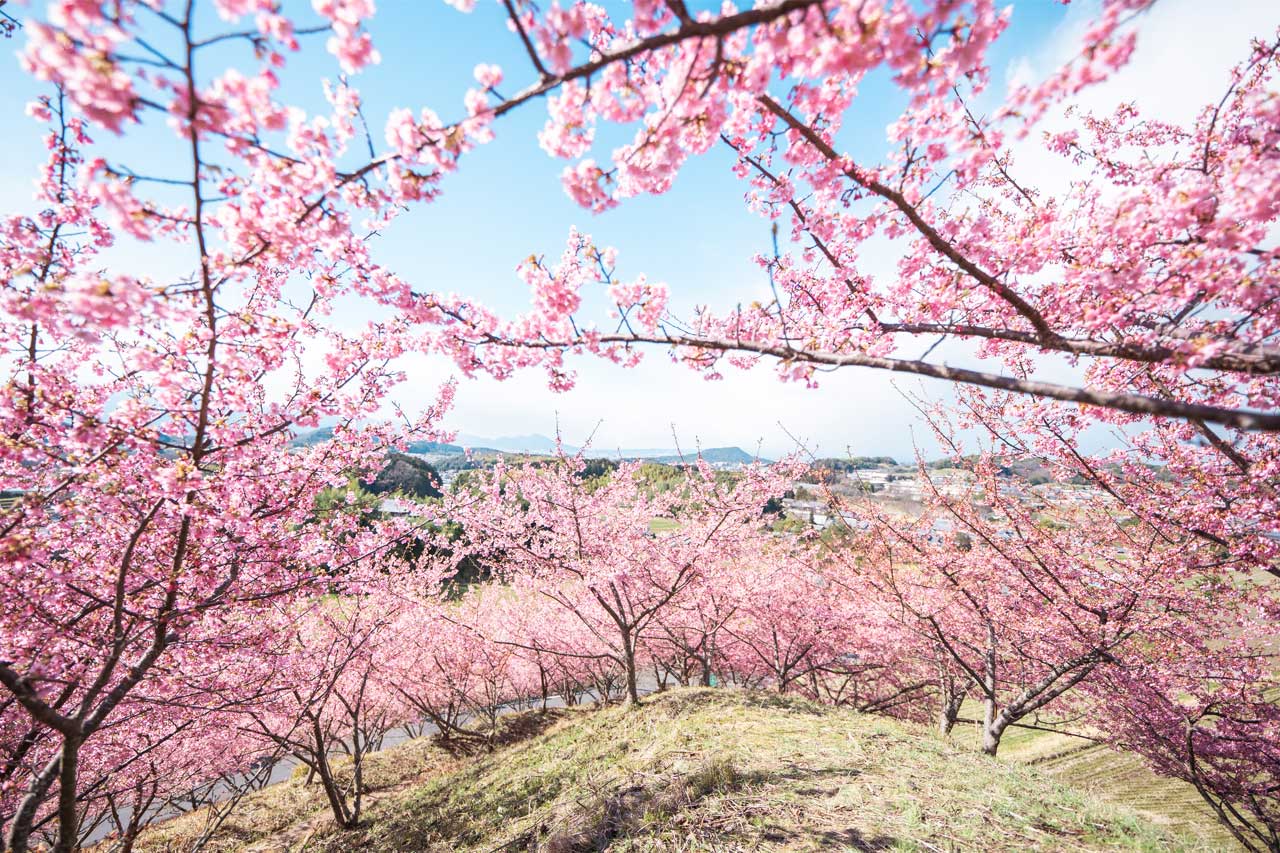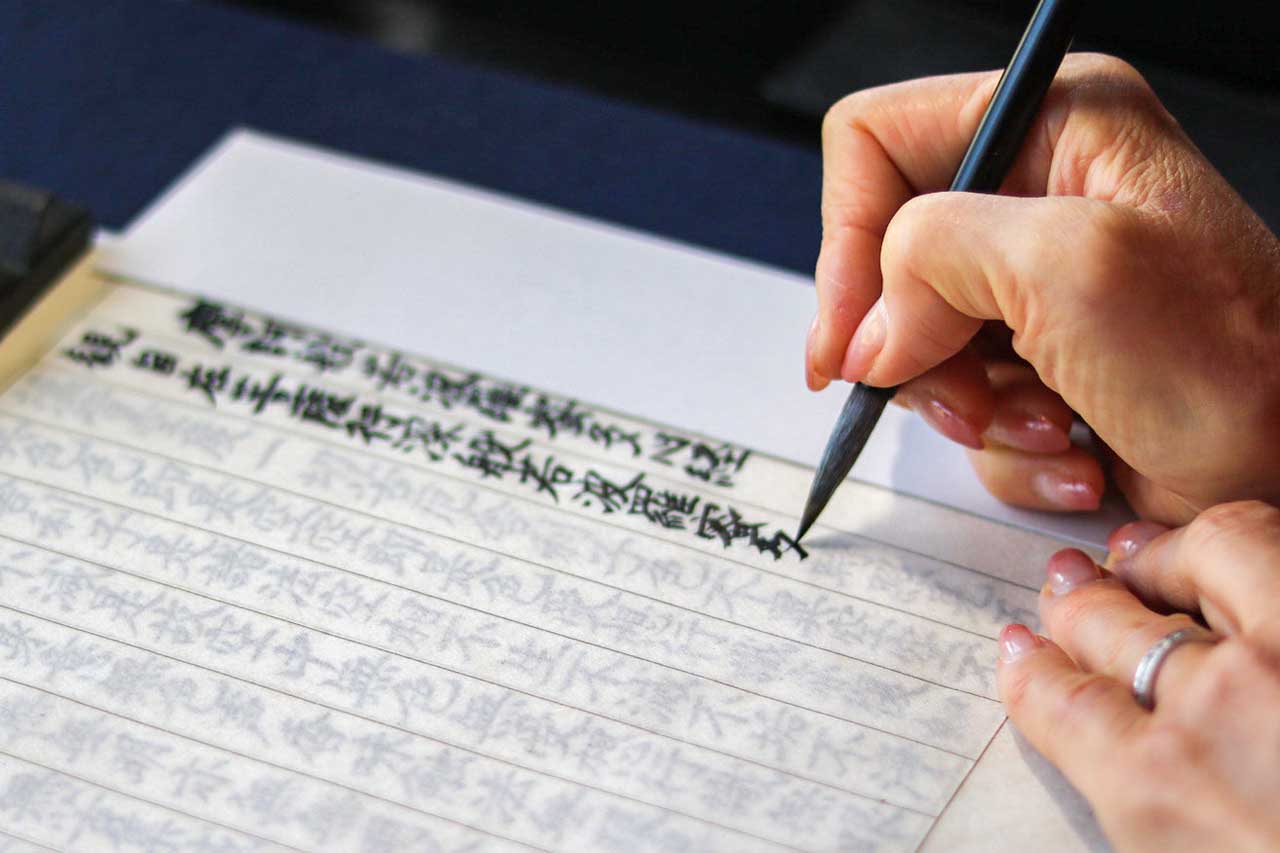B&B Asuka will introduce you to the beautiful scenery, historical spots, and experiences that everyone can easily enjoy when visiting Asuka Village.
Photo by asukakkochan
VIEW
-

Cherry blossoms in Asuka Village
The cherry blossoms in Asuka Village are in full bloom from late March to early April.
Ishibutai Tumulus, Oka Temple, Tachibana Temple, and Asuka Temple are famous, and also the cherry blossom trees along the Asuka River and the cherry blossoms on Amakashi Hills are very beautiful too.
Every year at this time, limited light-up event is held at Ishibutai Tumulus, so you can enjoy the fantastic night cherry blossoms with Ishibutai Tumulus. -

Rice terrace scenery
The rice terraces of Asuka Village are said to be the original landscape of Japan. "Inabuchi," "Kamura," and "Hosokawa" are famous, and they offers different views, “Inabuchi” offers "vastness," "Kamura" offers "views," and Hosokawa offers "sunsets." Especially in early June, when the water begins to drain into the rice fields, the Hosokawa rice terraces at dusk are a breathtaking sight, and it is a spot that many people visit with their cameras in hand.
-

Amakashi Hills
The summit is a gentle hill 148m above sea level. You can enjoy the cherry blossoms, rape blossoms, and poppies bloom in the spring, and also the beautiful red kochia flowers in autumn. From the observation deck on the hills, you can see the remains of Fujiwara-kyo (the stage of ancient history),the Yamato Sanzan, and in the distance, the mountain ranges of Mt. Ikoma, Mt. Nijo, Mt. Katsuragi, and Mt. Kongo.
It is also known as a walking spot, and a leisurely stroll with a packed lunch and drinks while enjoying the seasonal flowers and mountain ranges is a unique pleasure of Asuka Village. -

Oku-Asuka
The scenery of terraced rice fields, said to be the original landscape of Japan, and in autumn, harvested rice is hung on a platform made of bamboo and wood. There are ropes stretched across the Asuka River, and in the middle are male and female ropes made of bundles of straw. In the New Year, a rope-hanging ritual is held to pray for good harvests and prosperity of descendants.
Upstream of the Asuka River, there is a bridge made of stones called "Tobiishi" (stepping stones), and beyond that is a village called Kayanomori, where you can feel the leisurely flow of time and the unique scenery of stone masonry used to build houses on sloping land.
HISTORY
-

Ishibutai Tumulus
Ishibutai Tumulus was built in the early 7th century and is said to be the tomb of Soga no Umako. It is also known as one of the largest square burial mounds in Japan, with a total weight of 2,300 tons made up of 30 or so rocks.
The surrounding area is decorated with cherry blossoms in April, and the limited light-up event is held on every year at this time. You can enjoy the fantastic night cherry blossoms and Ishibutai Tumulus, as well as a beautiful starry sky on a clear day. -

Tachibana Temple
This temple is said to be the birthplace of Prince Shotoku, and is known as one of the seven temples built by him. The seated statue of Prince Shotoku (a national important cultural property) in the main hall is said to be the prince's appearance when he was 35 years old. The temple grounds also include the "Two Faces Stone," a stone structure with two faces, one good and one evil, and the coffered ceiling of "Ojo-in," next to the main hall, is very beautiful, with each lattice painted with a flower by contemporary artists.
-

Asuka Temple
Asuka Temple was the first full-scale temple in Japan, built by Soga no Iruka in 596, after Buddhism was introduced to Japan. Although most of the temple was lost in a fire in 1196. In the current main hall house, there is the oldest Asuka Daibutsu in Japan.
On the west side of the temple remains a five-tiered pagoda called the "Soka-no-Iruka no Kubizuka" and the surrounding area is decorated with cherry blossoms and rape blossoms in spring. -

Oka Temple
Japan Heritage Site, the seventh temple of the Thirty-Three Kannon Temples of the Western Provinces.
It is also known as Japan's first sacred place for warding off evil spirits, and the "Flower Pond" and "Flower Water Basin," which were opened in 2015 are very hot spot for the tourists, are decorated with rhododendrons and dahlias in spring, and autumn leaves and marbles in autumn, making it a popular Instagram spot that attracts many tourists. Every year, from late May to early July, "Yamato Sandai Kannon Hydrangea Corridor" is held, a hydrangea tour of the three temples of Hase Temple, Oka Temple, and Tsubosaka Temple, where visitors can enjoy the elaborate hydrangea plantings.
EXPERIENCE
-

Strawberry Picking
From January to early May, you can enjoy picking Asuka Ruby, a brand of strawberry from Nara Prefecture, at the strawberry farms in Asuka Village. Asuka Ruby is a popular strawberry with a bright red color reminiscent of the ruby gemstone, and a moderate sweetness and sourness. There are 18 strawberry farms in the village, and you can eat as much as you want for 30 minutes.
During this time, you can enjoy strawberry sweets at the cafes in the village. "Strawberry Fair" is held every year from early February to early March, you can enjoy various events with original limited-time strawberry sweets on the cafes. -

Bicycle Rental
Spend a day cycling around Asuka Village, a historic and natural village. If you have a bicycle, you can easily visit many spots in Asuka Village in one day. Recently, in addition to regular bicycles, you can also rent electric bicycles. There are bicycle rental offices in various places in the village, so we recommend making a reservation in advance. There are also sightseeing buses in the village, but we recommend cycling, which allows you to tour at your own pace without worrying about time.
-

Playing in the river
The water in the rivers near the source of Oku-Asuka is so clear that you can see the riverbed clearly, and both adults and children can enjoy playing in the river surrounded by rich nature. There are shallow and slightly deep areas, so it's better to bring swim rings or arm rings for children.
You can cross the “Tobiishi”(stepping stones) of Oku-Asuka, catch fish and insects, and in June you can even see fireflies.
Many areas of Oku-Asuka have been left untouched by nature, so there are many places with poor footing, but you can enjoy the great outdoors in a way that you normally can't experience. -

Copying Sutras
Experience copying the Heart Sutra at Kawahara Temple, known as Japan's first sutra copying dojo.
Copying sutras while gazing at Mount Amanokagu, one of the Yamato Sanzan mountains, and feeling the Asuka breeze as you empty your mind in the slow flow of time will free you from the fatigue of everyday life and cleanse your mind.

